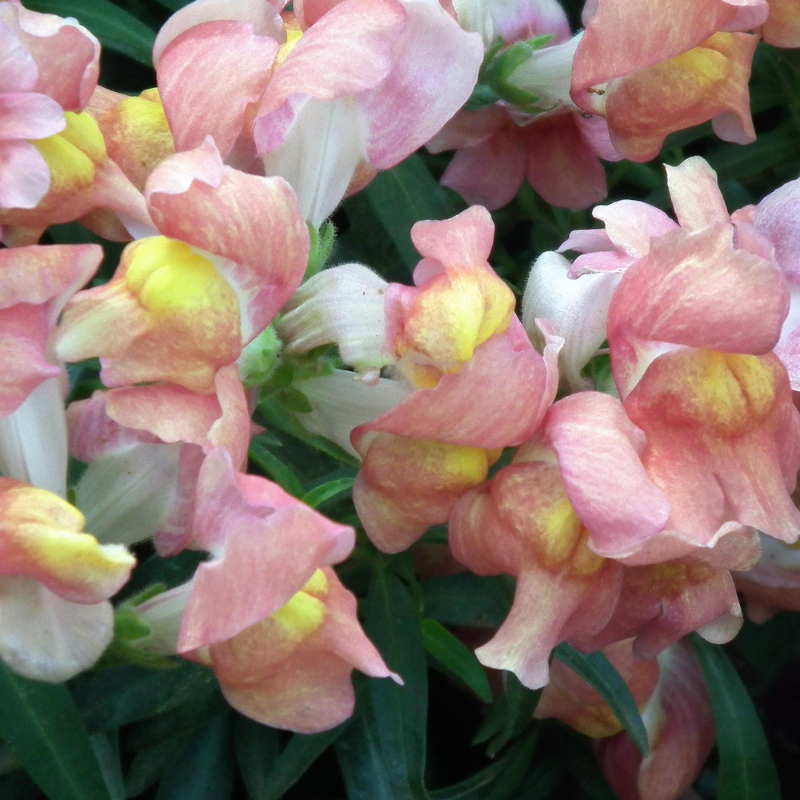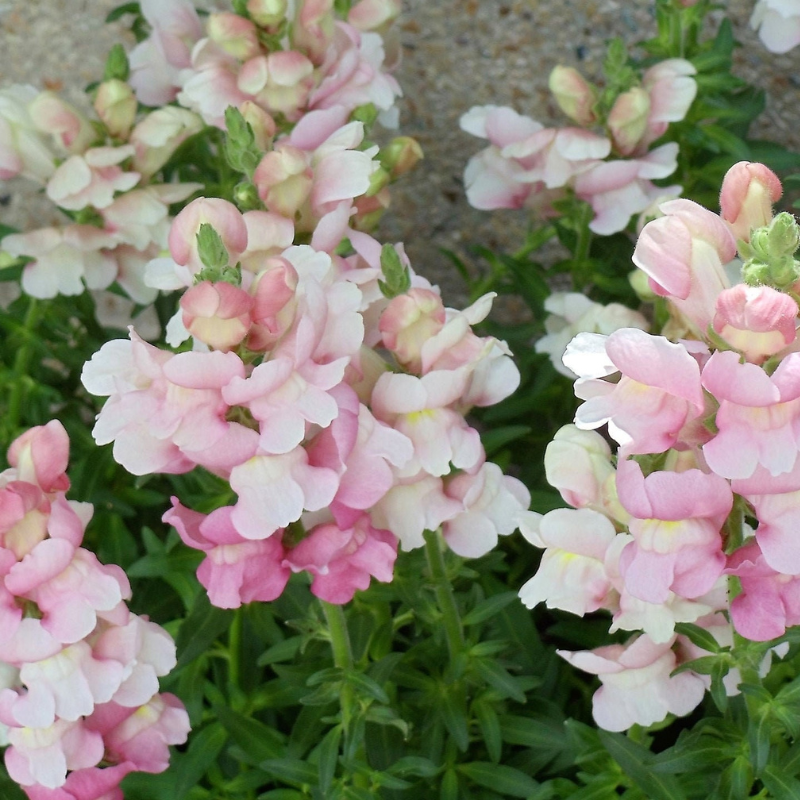- Historical context: Snapdragons, including the Appleblossom variety, have been cultivated for centuries and are known for their unique flower shape that resembles a dragon's mouth when squeezed.
- Geographical origination: Snapdragons are native to the Mediterranean region, particularly in areas of Spain and Italy.
- Relevant cultural significance: Snapdragons have been popular in European gardens since the Renaissance and are often associated with grace and strength in the language of flowers.
- Time period of discovery: Snapdragons have been known since ancient times, but their cultivation became widespread in Europe during the 16th century.
- Original habitat: Snapdragons originally grew in rocky areas and cliffs in the Mediterranean region.
- Notable historical uses: Historically, snapdragons were used in traditional medicine for their supposed anti-inflammatory properties.
- Ideal temperature range: Snapdragons thrive in cool weather, with an ideal temperature range of 55-75°F (13-24°C).
- Soil type: They prefer well-drained, slightly acidic to neutral soil with a pH of 6.0-7.0.
- Sunlight requirements: Full sun to partial shade is ideal for snapdragons.
- Watering needs: Keep the soil consistently moist but not waterlogged. Water at the base to avoid wetting the foliage.
- Planting season: Plant snapdragon seeds in early spring or late summer for fall blooms.
- Germination time: Snapdragon seeds typically germinate in 10-14 days.
- Growth cycle duration: Snapdragons can bloom from spring to fall, depending on the climate and care.
- Common pests and diseases: Aphids, rust, and powdery mildew are common issues. Regular monitoring and appropriate treatments can help manage these problems.
- Companion planting advice: Snapdragons pair well with other cool-season flowers like pansies, violas, and sweet alyssum.
- Common challenges and solutions: Snapdragons can be prone to root rot in poorly drained soil. Ensure proper drainage and avoid overwatering.
- Nutritional values: Snapdragons are not typically consumed, so they do not have notable nutritional values.
- Health benefits: While not commonly used in modern medicine, snapdragons were historically believed to have anti-inflammatory properties.
- Culinary uses: Snapdragons are not used in culinary applications.
- Medicinal uses: Historically, snapdragons were used in poultices and infusions for their supposed medicinal properties.
- Other unique advantages: Ornamental Value: Snapdragons, including the Appleblossom variety, are prized for their beautiful and unique flowers, making them a popular choice for gardens and floral arrangements.
Pollinator Attraction: Snapdragons attract bees and other pollinators, which can benefit the overall health of a garden.






